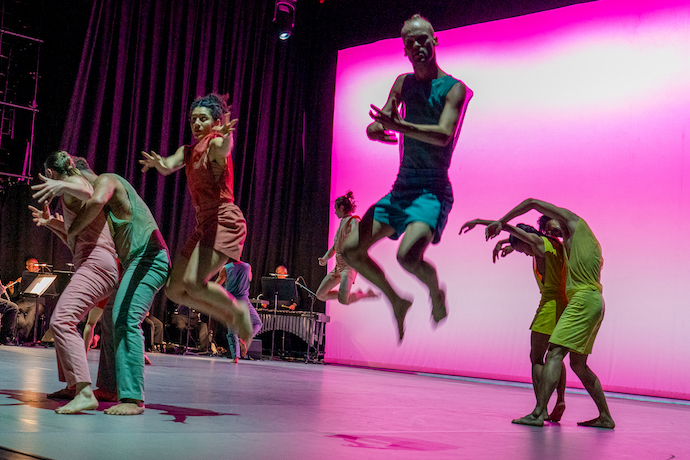
By Jack Marley
Queen Elizabeth Hall,
London
I wouldn’t be the first person to say that Terry Riley’s In C (1964) is a musical image of a utopian social order. At its heart, the piece is a meditation on the relationship between the group and the individual. An unspecified number of musicians play from the same music, with the same instructions: a series of 53 short musical cells, each to be repeated at will, progressed through at will. Every performer forges their own path through the piece, moving from cell to cell at their own pace. Yet this piece isn’t about isolated individualism: the members of the collective must be highly aware of the others’ progress, such that none get too far ahead, none left behind. Individual subjects working together without conflict to collective progress – hardly surprising it was conceived in early 1960s San Francisco.
- Read: Review of Graveyards and Gardens | a music, dance, sound collage and lightshow about memory
- Read: Dance inspired by literature | 5 contemporary dance pieces
Last week in London’s Southbank Centre, In C was performed by members of the London Sinfonietta alongside a troupe of dancers – Sasha Waltz and Guests. The formal process of In C has an obvious choreographic analogue, exploited in this performance, with the dancers progressing through a series of movement cells ranging from small hand gestures to longer, more complex snippets of choreography. This interdisciplinary transmutation was hugely successful, creating an engrossing scene of ever changing visual flux around the stage. Perhaps most compelling was when a pair or a group of dancers fell organically into unison, settling into the rhythm of a particular cell together before gradually dispersing elsewhere. Having performed In C recently with some friends, these occurrences had a similar feeling to when you find yourself playing the same cell as another musician across the space and you both felt that moment of connection. It’s a profoundly intimate experience, and the intimacy of such moments in the London performance was one of its most magical qualities.
Another great joy was the freedom the dance’s open process afforded the spectator: over in one corner of the space is a group of dancers repeating one cell in unison; on the far side, an isolated figure performing another; elsewhere, a frozen tableau of two figures intertwined. Just as the performers were navigating their own ways through the series of cells, so too was I finding my own way through the performance, using my attention to choreograph a series of captured moments unique to those sat around me: I noticed moments they will have missed, and vice versa. And yet again, this didn’t have an isolating effect: the overall impression of the dancing and the music was a shared experience for the audience, and at moments throughout the hour-long duration of the performance the troupe came together into a brief unison, cutting through the dynamism of dispersed activity with one breathtaking gesture, bringing dancers and audience together for a fleeting moment.
In C was an incredibly beautiful performance, and a highly optimistic one, too. Optimistic that groups can come together, work without discord, without isolated individualism, or anonymising collectivism; can find moments of intimacy and connection in the busyness of singular trajectories, not just on stage, but in the audience, a group a hundreds dragged out of the chaotic hubbub of a warm London evening to share this experience. Perhaps that is what we need from art now, as ever, images of utopia.
